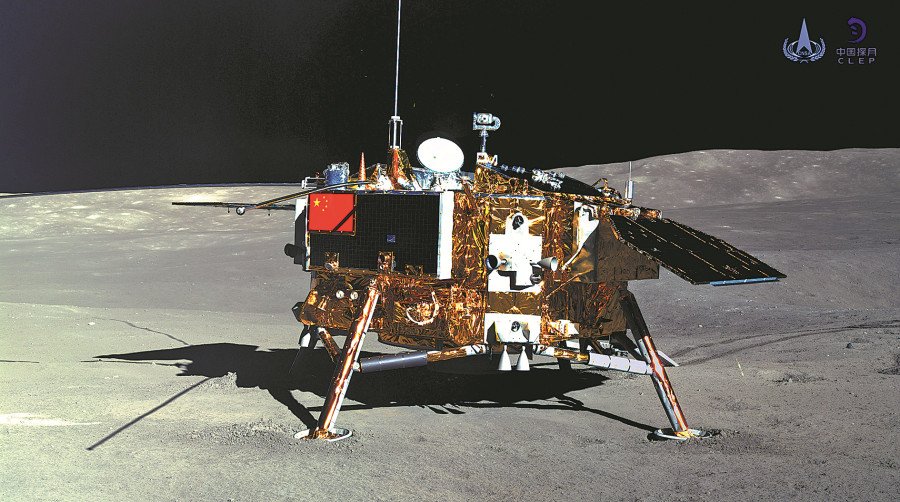You can smell the American primordial fear when and where China is at the forefront.
"Even as State Grid irons out the kinks in its UHV grids, the company is pushing its equipment and expertise abroad. It has led the creation of nine UHV standards through the International Electrotechnical Commission and the IEEE—a move that researchers at Argonne National Laboratory, in Illinois, warned would help Chinese suppliers “crowd others out of the global market” [PDF]."
China’s Ambitious Plan to Build the World’s Biggest Supergrid
A massive expansion leads to the first ultrahigh-voltage AC-DC power grid
By Peter Fairley
Wind rips across an isolated utility station in northwestern China’s desolate Gansu Corridor. More than 2,000 years ago, Silk Road traders from Central Asia and Europe crossed this arid, narrow plain, threading between forbidding mountains to the south and the Gobi Desert to the north, bearing precious cargo bound for Imperial Beijing. Today the corridor carries a distinctly modern commodity: gigawatts of electricity destined for the megacities of eastern China. One waypoint on that journey is this ultrahigh-voltage (UHV) converter station outside the city of Jiuquan, in Gansu province.
Electricity from the region’s wind turbines, solar farms, and coal-fired power plants arrives at the station as alternating current. Two dozen 500-metric-ton transformers feed the AC into a cavernous hall, where AC-DC converter circuits hang from the 28-meter-high ceiling, emitting a penetrating, incessant buzz. Within each circuit, solid-state switches known as thyristors chew up the AC and spit it out as DC flowing at 800 kilovolts.
From here, the transmission line traverses three more provinces before terminating at a sister station in Hunan province, more than 2,300 kilometers away. There, the DC is converted back to AC, to be fed onto the regional power grid. Since it opened in mid-2017, the 26.2 billion yuan (US $3.9 billion) Gansu–Hunan transmission line has moved about 24 terawatt-hours.
The sheer scale of the new line and the advanced grid technology that’s been developed to support it dwarf anything going on in pretty much any other country. And yet, here in China, it’s just one of 22 such ultrahigh-voltage megaprojects that grid operators have built over the past decade. In the northwestern region of Xinjiang, China recently switched on its largest UHV link: a 1,100-kV DC circuit that cost over 40.7 billion yuan. The new line’s taller transmission towers and beefier wires parallel the Gansu–Hunan line through the Gansu Corridor, before diverting to Anhui province in the east.
The result of all this effort is an emerging nationwide supergrid that will interconnect China’s six regional grids and rectify the huge geographic mismatch between where China produces its cleanest power (in the north and west) and where power is consumed (in the densely populated east). By using higher voltages of direct current, which flows through conductors more uniformly than does alternating current, the new transmission lines dramatically reduce the amount of power that’s lost along the way.
But even as China celebrates the completion of more than 30,000 km of UHV lines, power engineers are struggling to master the resulting hybrid AC-DC transmission system. They must ensure that the new long-haul DC lines don’t destabilize China’s regional AC grids. For example, if the 8-gigawatt DC line from Gansu were to unexpectedly go off line, the power shock could cause widespread blackouts in Hunan and beyond.
To minimize the threat, the State Grid Corp. of China, a state-owned company that runs most of China’s transmission and distribution grids, intentionally limits the line’s throughput to no more than 4.5 GW. In practice, the line has carried less than one-quarter of its design capacity on average. That’s one reason why over one-third of Gansu province’s theoretical wind output and one-fifth of its solar potential went unused in 2017. Other UHV lines in neighboring regions have similarly operated below capacity. And eastern provinces don’t have sufficient incentive to import the cleaner power that the UHV lines offer.
The ultimate solution to both issues, according to State Grid engineers, is to double down on UHV. They argue that the country must move far more energy via UHV DC to maximize the use of renewable energy while slashing reliance on coal. State Grid is also building a world-leading set of ultrahigh-voltage AC lines, to help eastern China’s regional AC grids absorb the output from those massive lines.
“The UHV AC power grid is like a deep-water port, and the UHV DC is like a 10,000-ton ship. Only the deep-water port can support the 10,000-ton ship,” says Qin Xiaohui, vice director of power system planning with State Grid’s China Electric Power Research Institute, in Beijing.
Meanwhile, power authorities everywhere are watching. Gregory Reed, a DC transmission expert who runs the University of Pittsburgh’s Center for Energy, says China’s UHV grid puts it far ahead of the rest of the world. “They’re investing significantly, and they’ve gone right to the highest levels of technology capability from day one. There’s no comparison anywhere else in the world. It’s like we’re all still pedaling our bicycles, while the Formula 1 race car goes flying by.”
China’s UHV movement was born of a limo ride. It was late 2004, and Liu Zhenya, then president of State Grid, was sharing a car with Ma Kai, minister of the National Development and Reform Commission (NDRC), the powerful state body that regulates China’s growth and major investments. As Chinese policy expert Yi-chong Xu describes in her 2017 book Sinews of Power (Oxford University Press), Ma complained of the crippling power shortages of the day. Liu blamed “weak and fragmented” grids, ones ill-equipped to exchange bulk power. And he proposed a bold solution: massive cross-country power lines utilizing the most advanced UHV technologies.
Within a year, Ma’s NDRC had approved an ambitious and comprehensive plan that embraced Liu’s vision. It combined UHV DC lines, which excel at moving bulk power from one spot to another over long distances, and a UHV AC backbone to reliably distribute that power to consumers. State Grid would lead the engineering and ensure that domestic suppliers would manufacture 90 percent of the UHV equipment, thus building up a new high-tech export sector for China.
Over the next decade, Liu delivered. He put some 2,000 State Grid engineers on the project and funded more than 300 professors and 1,000 graduate students at Chinese universities to conduct power-grid-related R&D. State Grid expanded and refocused its research centers to attack specific UHV issues, including how to safely handle the higher electromagnetic fields and the more potent impulses during switching and faults.
In January 2009, State Grid energized its first UHV demonstration line—a 650-km, 1,000-kV UHV AC transmission line that linked the North China and Central China regional grids. Ten years on, State Grid has completed 19 of 30 proposed UHV lines.
That aggressive build-out has helped fast-growing urban centers such as Shanghai stave off power shortages despite delays in the expansion of China’s nuclear power capacity and constraints on local coal power due to air-quality concerns. The new UHV grid is also helping the country lead the global transition to renewable generation, moving 161.5 terawatt-hours of hydro, wind, and solar energy in 2017 alone.
ABB, Siemens, and other international power-technology companies have been instrumental in developing and validating key components of the Chinese UHV grid. But State Grid has insisted on sharing the intellectual property for the technologies developed at its behest.






